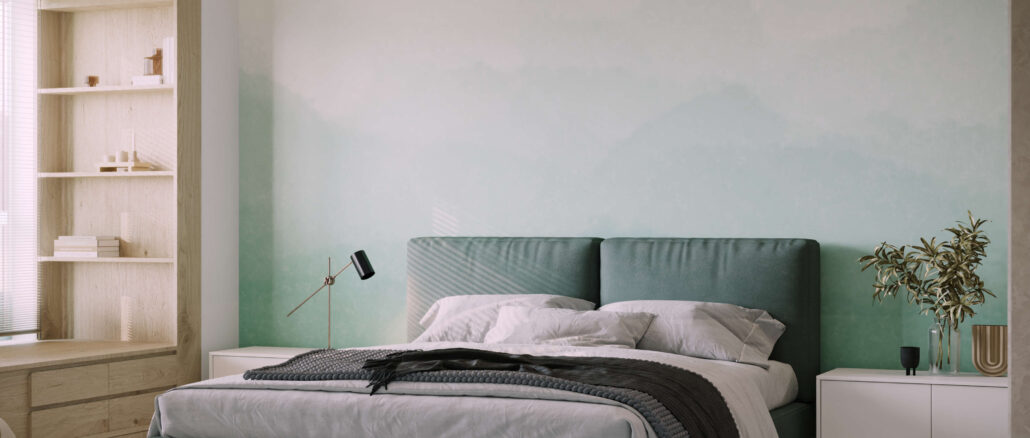
An ombre wall is a decorating technique where two or more colours gradually fade into each other, creating a smooth and seamless gradient effect across the wall. The term “ombre” originates from the French word meaning “shaded” or “graduated,” and it has become popular in various design and fashion contexts, including hair colouring, textiles, and interior design.
In the context of an ombre wall, the colours usually transition from light to dark or vice versa, creating a visually striking and aesthetically pleasing effect. The transition can be subtle or more dramatic, depending on your preferences and the specific design of the room. Ombre walls can add depth, dimension, and a unique focal point to your living space, making them a popular choice for accent walls, bedrooms, living rooms, and other interior areas.
James Mellan-Matulewicz, Creative Director at design brand Bobbi Beck, shares his top tips when it comes to adding ombre to your walls.
“There are two ways to achieve an ombre wall; paint or wallpaper. Painting an ombre wall is not quite as tricky as most would think and can be a bit more fun than putting up wallpaper. However, it can be limiting from a design perspective as it’s practically impossible to get smooth gradients and tricky to blend multiple colours. Paint is therefore recommended if you’re looking for a more rustic finish in a single hue.
Wallpaper on the other hand offers much greater variety when it comes to design. As the design is a non-repeat, you would be buying a mural, which are typically made custom to your wall size and sold by the square metre or square foot. However, murals are relatively simple to install and don’t differ too much from installing standard rolls of wallpaper.
Styling tips for choosing an ombre wall
“There are three main things to think about when choosing an ombre wall design; colour, direction and texture. From a colour perspective, the options are almost endless, but some ways to break it down are;
A single hue, with a gradient from light to dark. This is good for more minimalist schemes where you don’t want too many colours, but want something more interesting than just block colours on the wall. The gradient from dark to light could be subtle or dramatic depending on your preference.
Two hues blended together is a great way to integrate a coordinated colour scheme into a room interestingly and uniquely. The possibilities are endless with this so it’s just about choosing colours that compliment each other.
While most people think of one or two colours with ombre walls, there’s no reason you can’t go for even more colours. There will of course be a limit with how many colours would work well together, but if you’re looking for something more interesting, then why not go for a multicolour option.
When it comes to the direction of the gradient, the most popular option is to have it vertical. It’s more common to have the darker shade on the bottom and the lighter shade on the top, but reversing this could offer something more interesting.
For something even more unique, you could have a horizontal ombre, with the colours blending from left to right or even a diagonal gradient. Vertical gradients can work well in rooms with low ceilings as it can help give the impression of extra height. Horizontal gradients help when you’re trying to encourage a sense of motion, like hallways, landings and walkways.
Finally, the last thing to consider is texture. While the focus for an ombre wall is colour, adding some texture or graphic detailing to the design can help take it to the next level.
You don’t need to stop there. You could achieve an ombre effect while integrating a more literal design into the space, like a gradient forest or mountain mural.
Bobbi Beck’s ombre wallpaper collection can be found here: bobbibeck.com/wallpaper/ombre-wallpaper/
